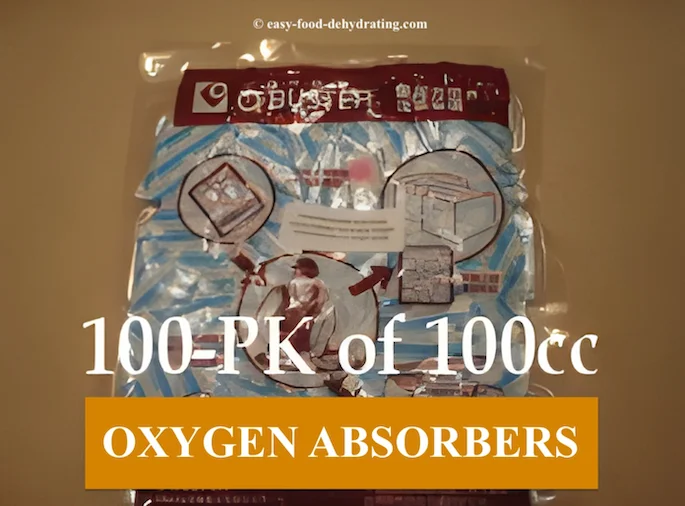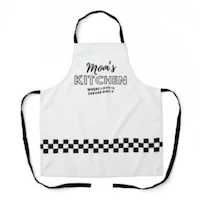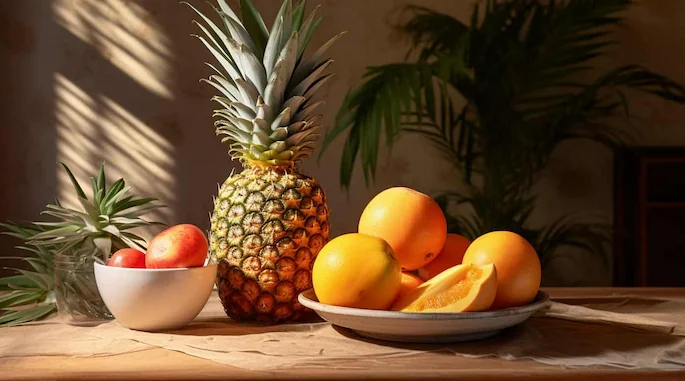whatever the reason or season!
- Home
- How To Dehydrate Fruit
- How To Dehydrate Mango
How to Dehydrate Mango
So you want to know how to dehydrate mango? Here you go!
Mangoes contain a wonderfully sweet and vibrant essence just waiting to become concentrated treats. I'll walk you through how to properly dehydrate mango slices at home to yield satisfying dried mango pieces that make healthy snacks any time - whether you're at home or in the great outdoors taking a walk, or backpacking.
I'll cover selecting optimal mangoes that are perfectly ripe (see FAQs below), how to prep mangoes for the dehydrator, how many hours to dehydrate mango slices based on your appliance, testing doneness for that crispy dried mango texture, and how to best store the dried mango bags while retaining flavor and nutrition.
You’ll soon discover why utilizing a dehydrator for unlocking mango’s hidden versatility is well worth the extra effort compared to only enjoying mangoes fresh.
One of the easiest and cheapest methods of food preservation is dehydration. It's a fun activity you can share with the kids too (especially the food vacuum-sealing process!)
TOP Frequently Asked Questions:
Dried mango in dehydrator is the top question, along with drying mangoes in dehydrator.
Dried mango in dehydrator is the top question, along with drying mangoes in dehydrator.
And how to make dried mango in a dehydrator is further down this page!
Dehydrated mango nutrition?
Dehydrated mango nutrition?
Check out our "Vitamins" and "Minerals" area directly below this FAQ section!
How to dehydrate mango?
How to dehydrate mango?
This is the third most-asked question; read the page you're on now to learn how!
How can you tell when a mango is ripe?
How can you tell when a mango is ripe?
You can tell when a mango is ripe by gently squeezing it and pressing it with your thumb. There should be some "give" in it. It will give off a fruity aroma. Also, the skin will be reddish-orange and may have small white specks on it. Don't pick green mangoes that are hard and have zero aroma.
What's the best way to cut a mango?
What's the best way to cut a mango?
Slice off the sides close to the long flat seed as we mention in the prep stage. Score the mango flesh in a checkerboard pattern - but don't cut through the skin. Turn the mango "inside out" (as shown in the the image at the bottom of the page), and the cubes will pop up for easy removal (and eating!)
How do you stop a mango from becoming stringy?
How do you stop a mango from becoming stringy?
As mangoes ripen, they develop more fibers, i.e. stringiness. You can choose varieties such as Tommy Atkins, or Keitt, known to be less fibrous. On the topic of over-ripening mangoes: stick them in the refrigerator to slow down the fiber growth.
How to dry mango in food dehydrator, and drying mango in a dehydrator?
How to dry mango in food dehydrator, and drying mango in a dehydrator?
It's easy to dehydrate mango, just follow the instructions coming up!
Mango Nutrition Info.
VITAMINS: Vitamin A (beta carotene hence their orange color!), Vitamin C, Vitamin B6, Vitamin E, and Vitamin K.
MINERALS: Copper and Magnesium.
Mangoes are a good source of dietary fiber, too.
People ask me, "Is dehydrated mango good for you?" As you can see above with the number of vitamins and minerals mango contains, well yes - mango is good for you!
Begin by Using a Good Sharp Knife!
Check out this great chef's knife with a full tang that means the handle and blade "are one" so they can't come apart when we're slicin' and a dicin'.
I know these Cutluxe Chef knives may be a little expensive, but they do last pretty much a lifetime when you maintain their cutting edges.
*As an Amazon Associate, I earn from qualifying purchases with no price increase to you. Read disclosure here.
Dehydrate Mango Before it Sours!
For those of us who hate tossing spoiled fresh fruits or vegetables, get busy dehydrating your fresh mango before it goes off! Don't forget that dehydrated apples, bananas, and pineapples are just a few other fruits that are excellent for dehydration.
Be self-sufficient: get those fruits and veggies socked away for that rainy day - and keep your pantry full - whatever the reason or the season!
How to Dehydrate Mango
Drying mangoes in a food dehydrator is easy:
- Slice into 1/4" thick pieces, uniformly sized
- Place the mango on your food dehydrator trays
- Turn on your dehydrator and set the temperature between 125°F and 135°F (or per your food dehydrator's instructions).
- Drying time: between 10-12 hours
- Dehydrated mango will feel flexible with no moisture.
- Remember to rotate your food dehydrator trays, for even drying.
Arrange your mango slices on your dehydrator trays making sure the pieces don't overlap. We need proper air circulation to make sure they dry at the same time.
If you have big and small pieces on the same tray, the smaller ones will dry faster and will end up being too dry if you wait for the larger pieces to "catch up." Conversely, the larger pieces will be too damp if you go by how dry the smaller pieces are, does that make sense?
Marvelous Mango ~ Fresh, Canned, or Frozen!
If you're using canned mango, pour the opened canned contents into a sieve over your kitchen sink to let excess juicy syrup drain out. Give the pieces a quick rinse to remove any remaining sugar, and pat them dry.
When using frozen mangoes, all you have to do is let them thaw. Yes, a strainer in the kitchen sink works well. Chop up the mango in evenly-sized pieces, whether it's a fresh, canned, or frozen mango. Having the pieces the same size makes them dry at a uniform rate.
Allow your mango slices to cool before storing them, one step I include is called "conditioning," so please click the link to read more about that step. I do consider conditioning to be an optional step, by the way.
What we don't want to do is store 'slightly warm food' in plastic vacuum-sealer bags because you may end up with condensation inside the bags. That can cause the risk of bacterial mold growing - and that's why we add an oxygen absorber into the vacuum-sealer bag, before drawing out the air.
Shout Out to My Hubby:
As he was reading this page he asked, "Susan, why can't you put small pieces on one tray, and larger pieces on another tray? And when the smaller pieces are done, you just take them off that tray?"
I tried to come back with a cutesy response, but hey, he is right. You can do that and it's a great idea! (Why didn't I think of it? Grr.)
Reminder: Always have your Nesco running/drying with a minimum of four trays.
Use 100cc Oxygen Absorbers

When storing my dehydrated mango, the oxygen absorber size I use the most is a 100cc size. When you're ready to dehydrate your batch of dried mango, open up your oxygen absorber bag and follow my trick on resealing oxygen absorber bags ASAP after opening!
Many people write in to ask if they can just use a Ziploc bag: my answer is - it depends! If you're going to be eating dried mango the day after, then sure, a Ziploc bag is fine. But if your aim is to store your dehydrated mango for long-term storage, then please use a proper vacuum-sealer bag with a 100cc oxygen absorber tucked in it (again, prior to drawing out the air with the food vacuum-sealer machine).
I use a FoodSaver brand food vacuum sealer. I've had mine for years!
Mother's Day Specials!
FoodSaver Food Vacuum Sealer Machines at Amazon
The FoodSaver machines remove air, one of the main causes of mold and food spoilage - and they create an airtight seal to lock in freshness.
Helps keep food fresh longer.
Comes complete with a starter kit that includes an 11" x 10' heat seal roll, (3) quart heat seal bags, (2) gallon heat seal bags, and an accessory hose, so you'll soon be on your way to keeping your food fresh, eliminating waste, and saving money.
The 2-in-1 Automatic Vacuum Sealing System helps keep
food fresh longer.
One FoodSaver 2-in-1 appliance does it all: automatic bag detection and vacuum sealing mean two quick and easy steps to seal and save, and the built-in handheld sealer eliminates the need for additional attachments when sealing zipper bags and containers.
FoodSaver 8" x 20' rolls, 6-pk
FoodSaver GameSaver 8" x 20' Vacuum Seal Long Roll with BPA-Free Multilayer Construction
- Keep game and fish fresh up to 5x Longer with FoodSaver GameSaver 8-inch rolls.
- Create custom-sized bags - simply cut a piece to your desired length, seal one end, fill, and then vacuum seal.
- 8" x 20' rolls
- BPA-free
- Pack of six rolls
FoodSaver 1-quart Food Storage Sealer bags
- Constructed of durable yet pliable material that creates an airtight barrier around foods, extending freshness and locking in flavors
-
Quickly and easily portion food
from bulk shopping or when storing leftovers.
- BPA-FREE MATERIAL: Safe for storing raw and cooked foods, it's also freezer, refrigerator, microwave, and boil-safe
- 1-quart size precut bags, 44-count
FoodSaver pint-size Food Storage Sealer bags
- Constructed of durable yet pliable material that creates an airtight barrier around foods, extending freshness and locking in flavors
-
Quickly and easily portion food
from bulk shopping or when storing leftovers.
- BPA-FREE MATERIAL: Safe for storing raw and cooked foods, it's also freezer, refrigerator, microwave, and boil-safe
- 1-pint size precut bags, 28-count
*As an Amazon Associate, I earn from qualifying purchases with no price increase to you. Read disclosure here.
Add These Spices to Mango!
Did you know, it's quite common to add chili powder and other spices to mango? Think:
- Mango Salsa
- Mango Chutney
- Mango Lassi (flavored with chili powder, and other spices like cardamom, saffron, or cumin).
- Mangoes with Tajín (a Mexican seasoning mixture of chili peppers, lime, and salt).
How about indulging in chili mango popsicles now you know how to dehydrate mango? Simply blend the rehydrated mangoes with chili powder and lime - it makes a refreshing ice pop with a kick.
Check out this easy-release 10-Cavity Red Silicone Ice Pop mold from Amazon.com
*As an Amazon Associate, I earn from qualifying purchases with no price increase to you. Read disclosure here.
Mangoes with a sweet and sour mix are favorites in Mexico, India, and South Asian cuisines.
My mom used to love mango chutney! Check out this Indian Mango Chutney recipe. Share your dehydrated mango treats with friends and family, and make dried mango packets for your next hiking trip.
Mango for Mountain Hikes...
Before we get going with how to dehydrate mango properly, I want to tell you that when we dry out our mango, it gets significantly lighter making it a great choice for snacking when toting it up those mountain trails!
Dehydrated mango also has a long shelf life when stored properly. You'll discover that dehydrating different fruits is fun, and in doing so, you'll have a steady supply of nutritious snacks at hand and won't get bored just eating one variety.
Mangoes have a flavor all their own - they're a cross between a pineapple, peach, and an apricot. Click on any of those links to see how to dehydrate those fruits.
You can use fresh mango or even canned or frozen mango! If you opt for using fresh, make sure it's ripe. Pick one that is firm to the touch but does yield a little from the pressure of your thumb. (See more in the FAQs at the end of this post).
Mango preparation is easy: simply wash the mango and then peel it. Use a sharp knife or a vegetable peeler, just be careful - watch your fingers, even when using a vegetable peeler! Slice carefully down the sides, taking care not to cut into the big flat seed in the center. (Ditto "see more in the FAQs at the end of this post").
What you'll end up with are three thick mango slices. Discard the middle section that houses the seed. Cut up the remaining flesh into nice thin slices, around 1/4" thick.
The best way to learn how to dehydrate mango is by using an electric dehydrator such as a Nesco or an Excalibur brand:
Excalibur DEHYDRATORS at Amazon
Excalibur 2400 Food Dehydrator, 4-Tray Starter
This is a square-shaped food dehydrator, that boasts 4 square feet of drying space. Black textured plastic body. Remove the front panel for access to its four trays.
- 220 watts of drying power
- 4 removable trays
- 16.25 x 13 x 6.5 inches (LxWxH)
- Temperature range: 95°F - 165°F
- Comes with: 4 trays, a digital download guide to dehydration
Excalibur 2900ECB 9-Tray Electric Food Dehydrator
This is a square-shaped food dehydrator, that boasts 15 square feet of drying space. Black textured plastic body. Remove the front panel for access to its nine trays.
- 400 watts of drying power
- 9 removable trays
- 19 x 17 x 12.5 inches (LxWxH)
- Temperature range: 105°F - 165°F
- Comes with: 9 trays, a digital download guide to dehydration
Excalibur 3900B 9-Tray Electric Food Dehydrator
This is a square-shaped food dehydrator, that boasts 15 square feet of drying space. Black textured plastic body. Remove the front panel for access to its 9 trays. Has a built-in on/off switch.
- 600 watts of drying power
- 9 removable trays
- 19 x 17 x 12.5 inches (LxWxH)
- Temperature range: 105°F - 165°F
- Comes with: 9 trays, a digital download guide to dehydration
*As an Amazon Associate, I earn from qualifying purchases with no price increase to you. Read disclosure here.
Nesco DEHYDRATORS at Amazon
Nesco FD-80A Food + Jerky Dehydrator
This is a square-shaped food dehydrator, perfect for snacks, fruit, and beef jerky. White with a top black tray edge, with a white lid.
- 700 watts of drying power
- Expandable to 8 trays
- 15.25 x 10.25 x 15.63 inches (LxWxH)
- Temperature range: 95°F - 160°F
- Comes with: 1 Clean-A-Screen, 1 Recipe Instruction Book, 1 Jerky Seasoning & Cure Sample
Nesco FD-61WHC Snackmaster Encore Food Dehydrator
This round Nesco Snackmaster comes with a jerky gun kit and 5 trays. It has a very light grey body with a darker grey lid.
- 500 watts of drying power
- Expandable to 12 trays
- 13.5 x 13.5 x 9.25 inches (LxWxH)
- Temperature range: 95°F - 160°F
- Comes with: 1 Jerky Gun with 3 tip attachments, 2 Fruit Roll Sheets, 2 Clean-A-Screens, 5 Jerky Seasoning & Cure Samples, Recipe & Instruction book
Nesco FD-60 Snackmaster Express Food Dehydrator
This is the new version of mine as it has an updated lid. It's a light grey body with a darker grey lid.
- 500 watts of drying power
- Expandable to 12 trays
- 13.5 x 13.5 x 9.25 inches (LxWxH)
- Temperature range: 95°F - 155°F
- Comes with: 1 Fruit Roll Sheet, 2 Original-Flavor Jerky Spice & Cure Packets
*As an Amazon Associate, I earn from qualifying purchases with no price increase to you. Read disclosure here.
Best Areas to Grow Mango?
The best areas for growing mangoes are:
- Southern Florida because the coast of Florida down to the Florida Keys enjoys a climate that's ideal for growing mangoes. Miami-Dade County is a mango-growing haven.
- Southern California because they enjoy micro-climates along the southern Cali coastline, such as San Diego County and parts of Riverside County.
- Hawaii because they too have an excellent climate for growing mangoes due to their subtropical year-round temperatures.
- Puerto Rico! This Caribbean island provides warm, humid conditions which are perfect for mangoes.
So now you know how to dehydrate mangoes and where they highly likely came from before they arrived at your grocery store or roadside stand!




































